Creating a mood board is an essential part of an artist’s creative process. Whether you’re a painter, illustrator, fashion designer, or mixed-media artist, a mood board helps you refine your ideas, visualize color palettes, and establish a cohesive aesthetic. This guide will walk you through the process of curating a stunning mood board that sparks creativity and elevates your artistic projects.
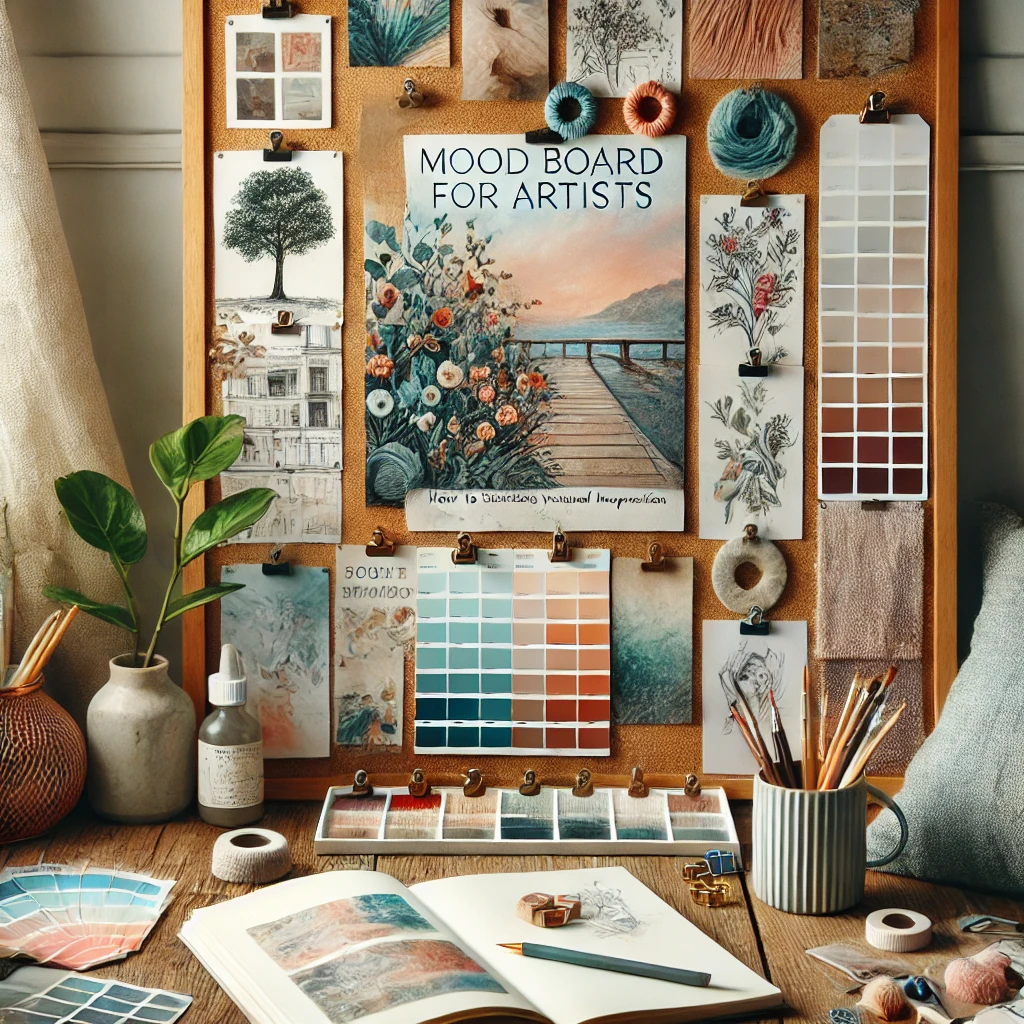
Why Every Artist Needs a Mood Board
A well-curated mood board serves as:
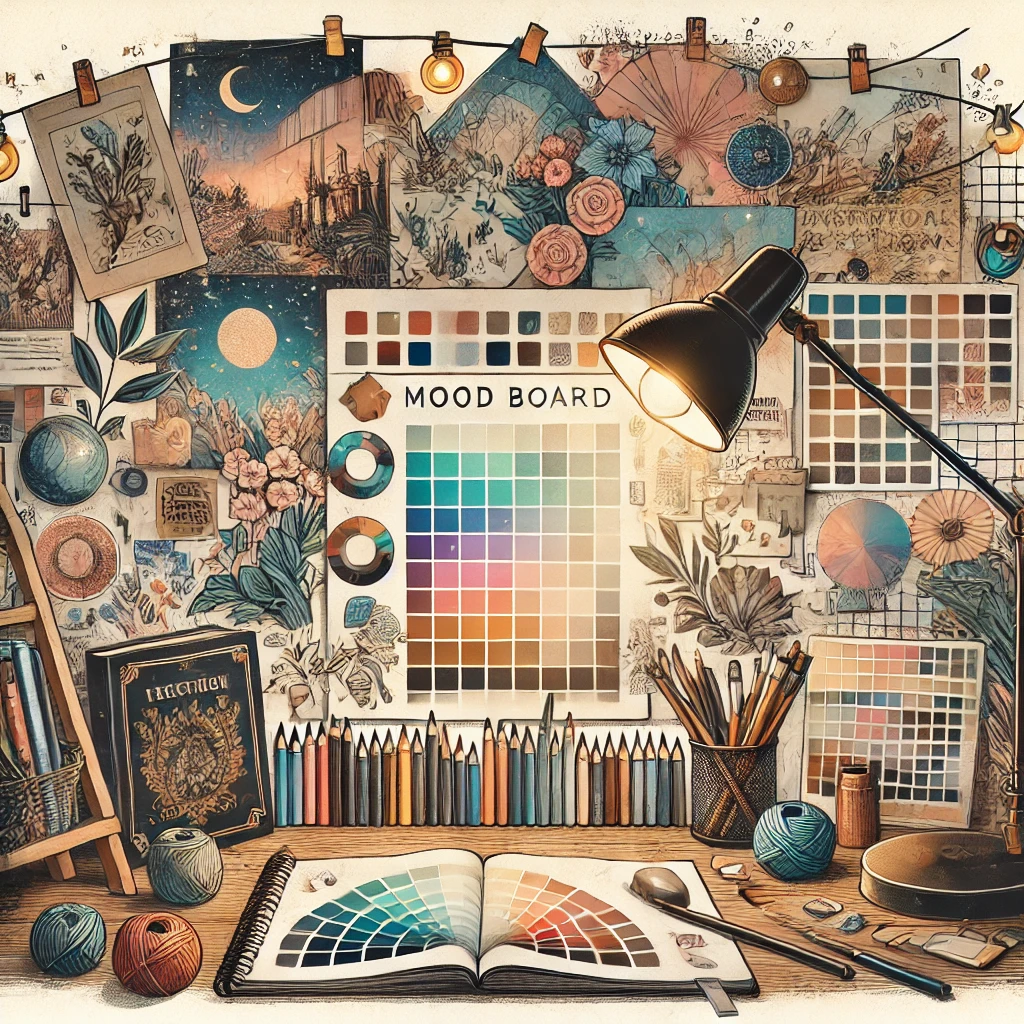
- A Visual Guide – Helps artists stay true to their creative vision.
- A Source of Inspiration – Combines different elements that ignite new ideas.
- A Tool for Storytelling – Captures the mood, emotions, and themes of a project.
- A Color Palette Reference – Defines a color scheme that aligns with your art style.
Types of Mood Boards
- Traditional (Physical) Mood Boards – Created with magazine clippings, fabric swatches, paint samples, and sketches.
- Digital Mood Boards – Designed using platforms like Pinterest, Canva, or Adobe Illustrator.
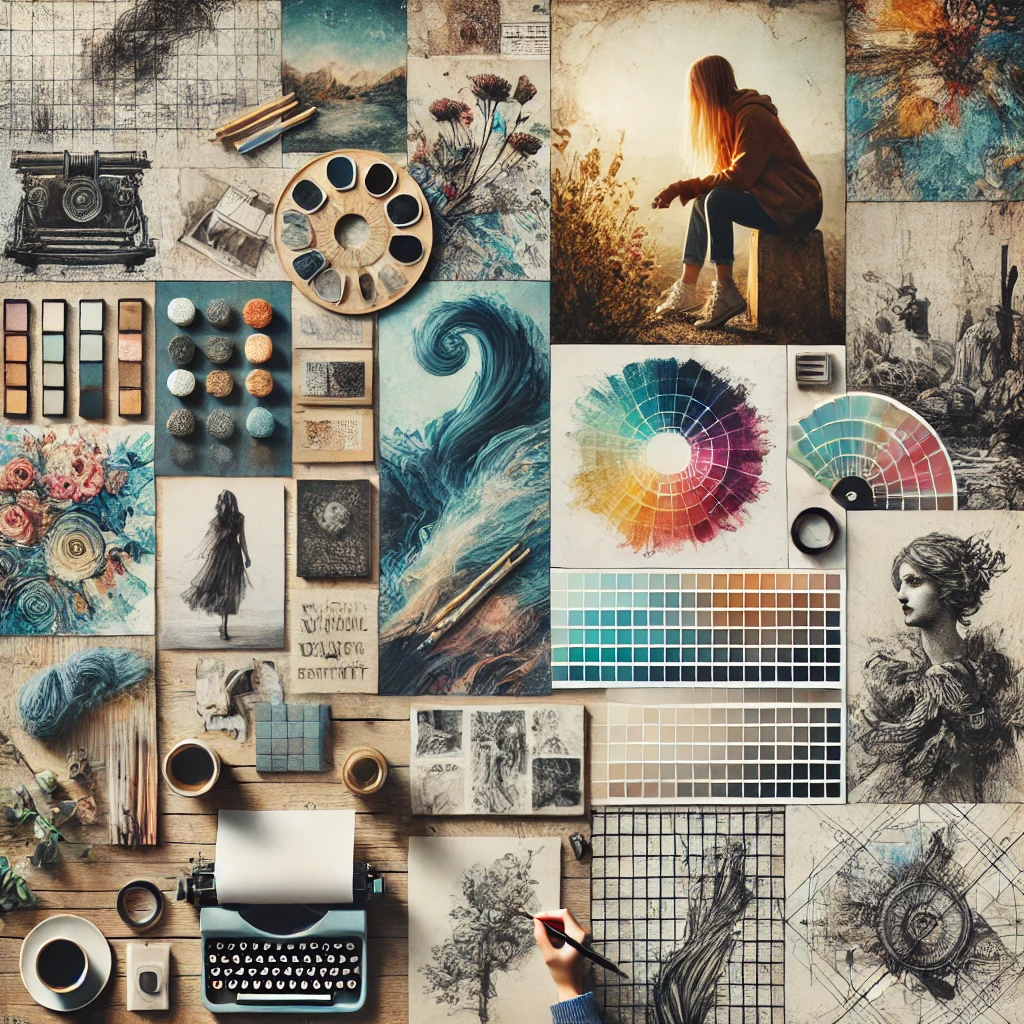
Pro Tip: If you’re aiming for a Pinterest-worthy mood board, opt for a digital version that can be easily shared and refined!
Step-by-Step Guide to Creating a Stunning Mood Board
1. Define Your Vision and Theme
Before gathering visuals, establish the purpose of your mood board:
- Are you working on a new art collection?
- Are you designing a fashion line?
- Are you exploring aesthetic themes for an illustration?
Write down a few keywords that represent your vision (e.g., ethereal, vintage romance, moody noir, surrealism, or botanical elegance).
2. Gather High-Quality Visuals
- Use Pinterest to create digital inspiration boards.
- Collect images from art books, magazines, or personal photographs.
- Screenshot or save color palettes from design websites like Adobe Color.
- Include texture references like fabric swatches or brushstroke samples.
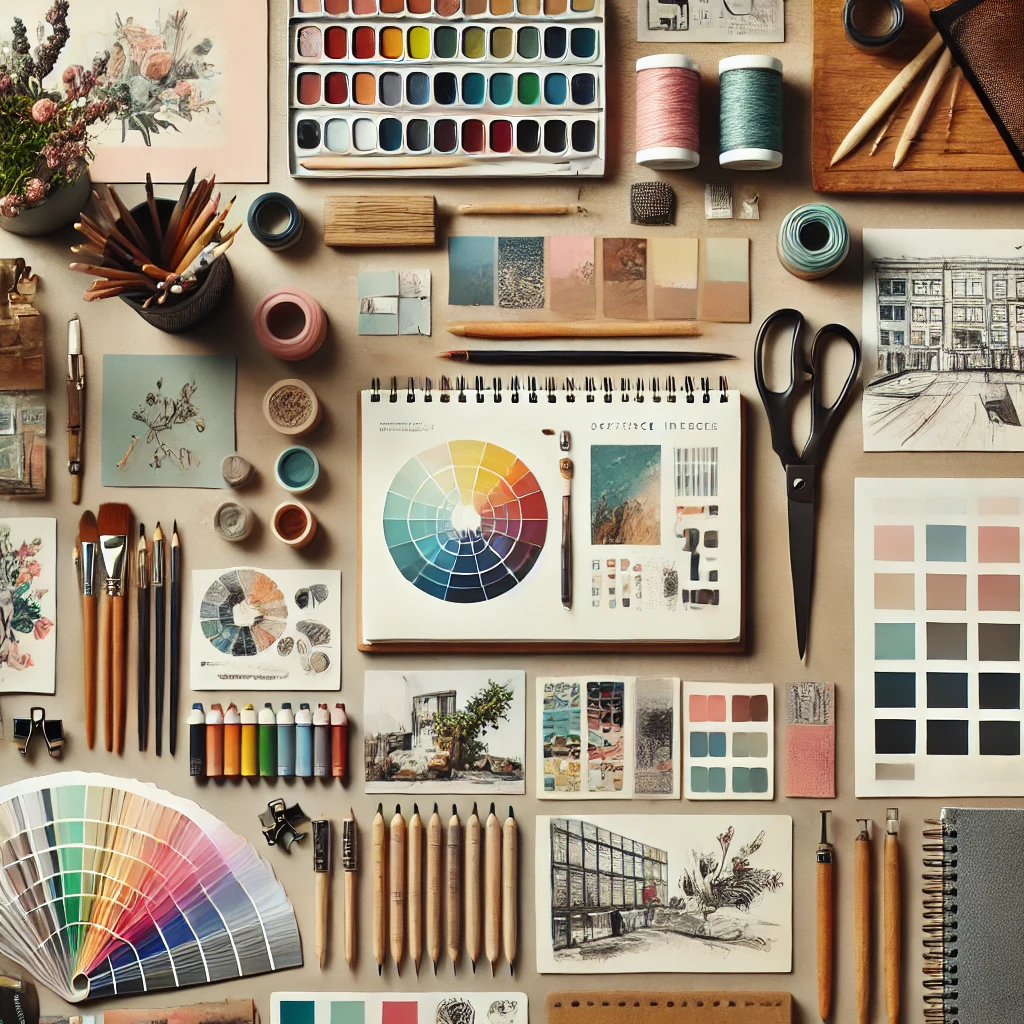
(This blog contains affiliate links, meaning I make a small commission at no extra cost to you.)
Product Recommendation: Enhance your physical mood boards with high-quality sketchbooks, washi tape, and print-friendly art paper.
3. Organize and Arrange Your Images
Once you’ve gathered your inspiration, it’s time to arrange everything into a cohesive layout.
- For Digital Boards: Use Canva or Milanote to drag and drop images into sections.
- For Physical Boards: Use a corkboard or foam board for easy rearrangement.
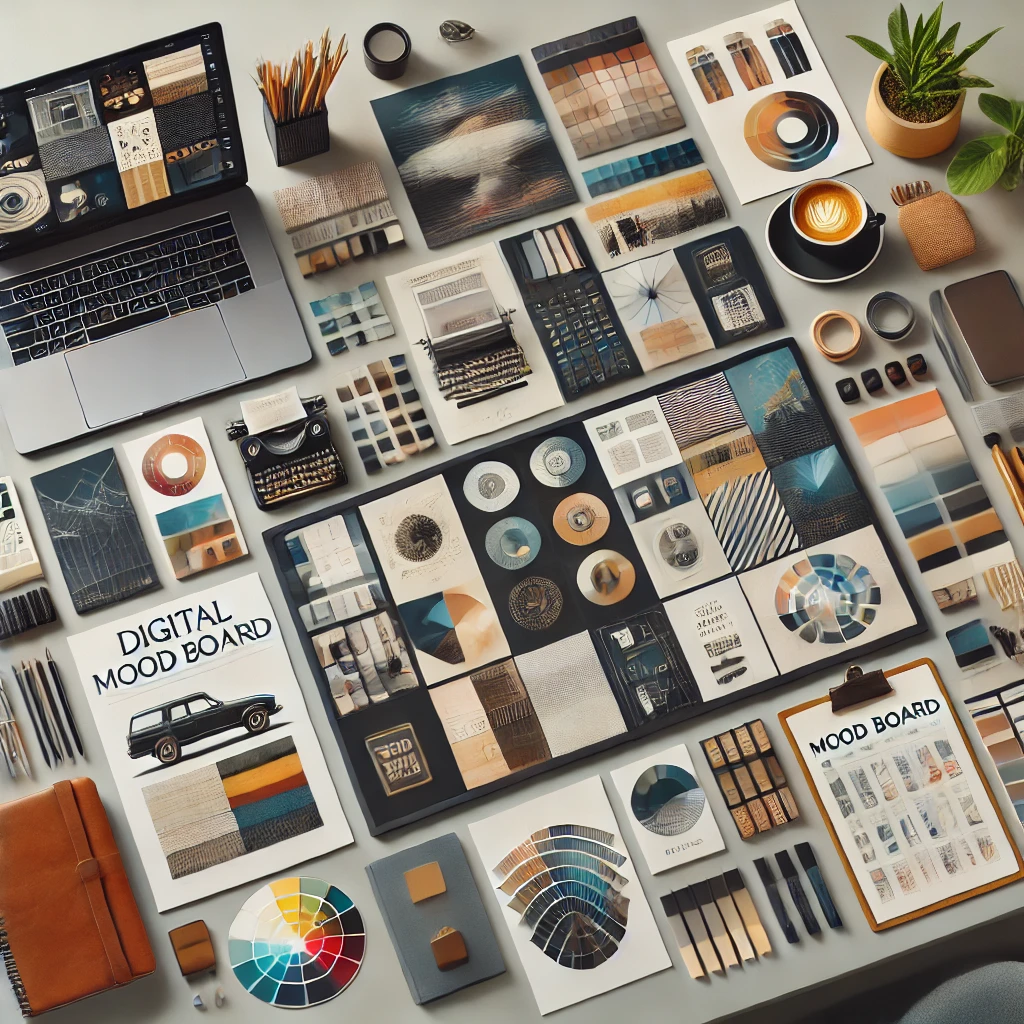
Composition Tips:
✔ Group similar colors and textures together.
✔ Maintain a balance between images, text, and negative space.
✔ Place focal points (most important visuals) at the center.
4. Create a Color Palette
A mood board isn’t complete without a defined color scheme.
- Extract colors from your favorite images.
- Use Adobe Color or Coolors.co to generate a color palette.
- Apply the colors to your artwork or design project.
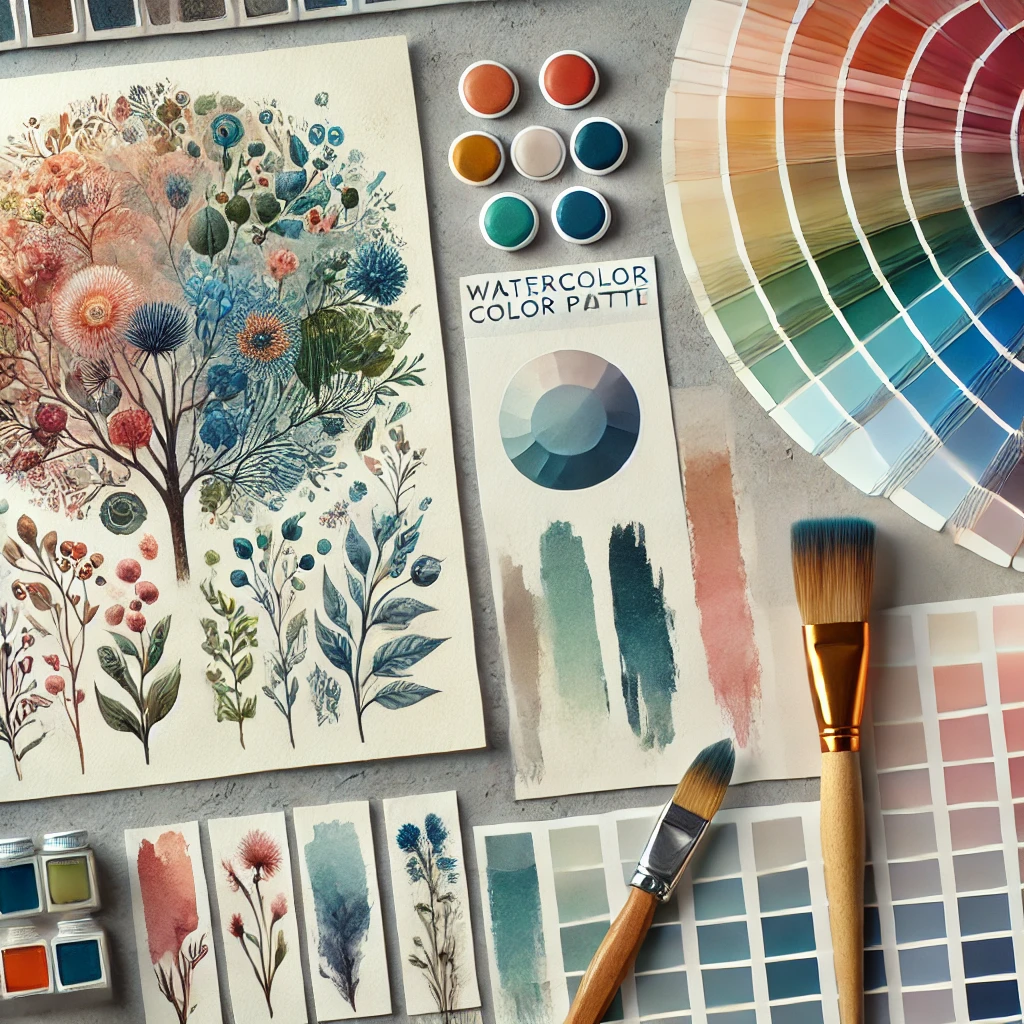
Product Recommendation: Invest in artist-grade markers, watercolor sets, and acrylic paints for color exploration.
5. Add Typography & Text (Optional)
If your mood board is for branding or conceptual work, add:
- Typography samples to reflect the style.
- Inspirational quotes that capture the mood.
- Handwritten notes for a personal touch.

Best Tools for Creating Mood Boards
Whether you prefer digital or physical mood boards, these tools will enhance your creative process:
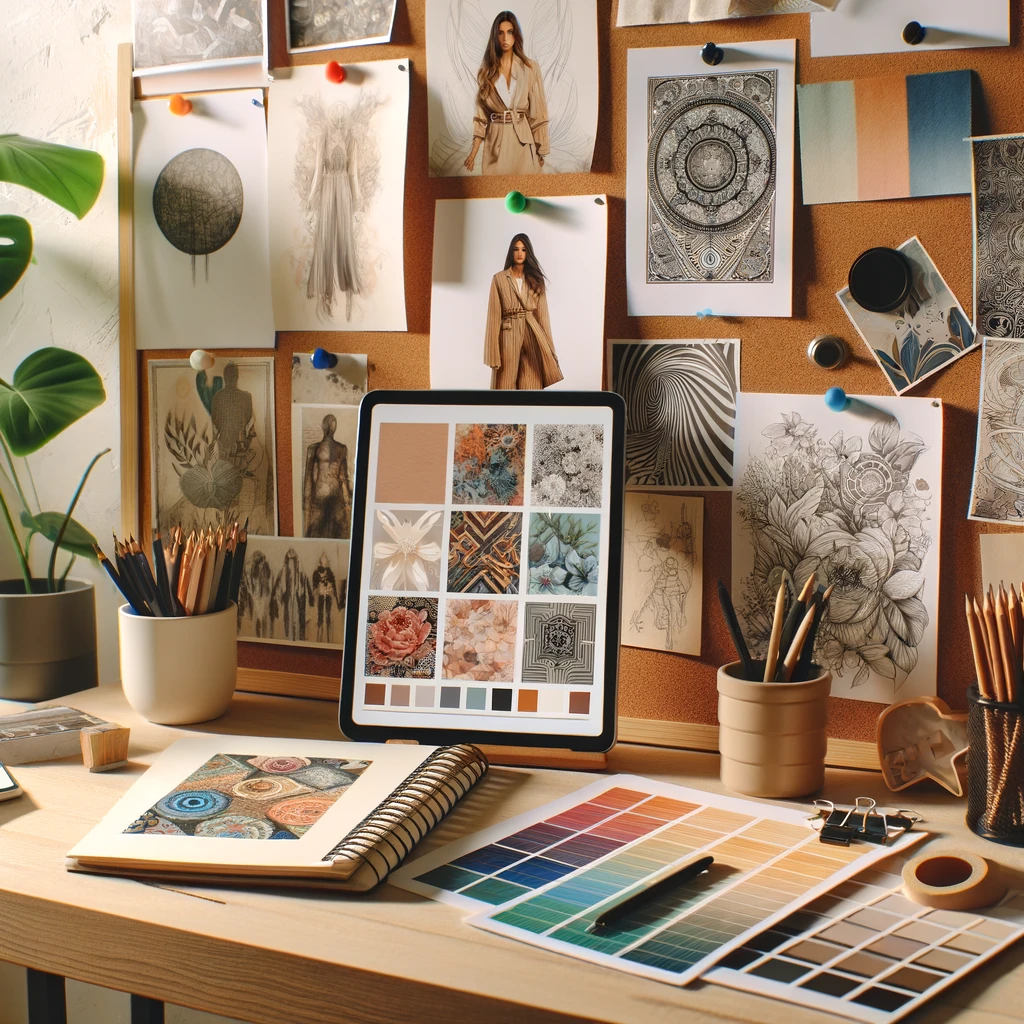
Digital Mood Board Tools
- Pinterest – The ultimate visual inspiration platform.
- Canva – User-friendly design tool for mood boards.
- Milanote – Great for creative brainstorming and organization.
- Adobe Illustrator – For professional, polished layouts.
Physical Mood Board Essentials
- Corkboards & Foam Boards – Ideal for pinning physical references.
- Scissors, Glue, & Tape – For arranging and layering cutouts.
- Sketchbooks & Notebooks – For rough drafts and color swatches.
Product Recommendation: Explore premium art supplies, high-quality sketchbooks, and creative toolkits.
Mood Board Inspiration for Different Art Styles
Need ideas? Here are some mood board themes to get you started:
🎨 Dreamy Watercolor Mood Board – Soft pastels, fluid textures, and botanical elements.
🖤 Dark Academia Mood Board – Deep browns, vintage books, candlelit aesthetics.
✨ Celestial Art Mood Board – Cosmic hues, galaxy textures, and ethereal motifs.
🌿 Nature-Inspired Mood Board – Earthy tones, wild landscapes, and organic patterns. 👗 Fashion Sketch Mood Board – Runway inspirations, fabric samples, and color blocking.
Final Touch: Share & Utilize Your Mood Board
Now that you’ve curated your mood board, it’s time to:
✔ Print and pin it in your workspace.
✔ Use it as a reference for your artwork.
✔ Share it on Pinterest, Instagram, or a blog.
✔ Refine and update it as your vision evolves.
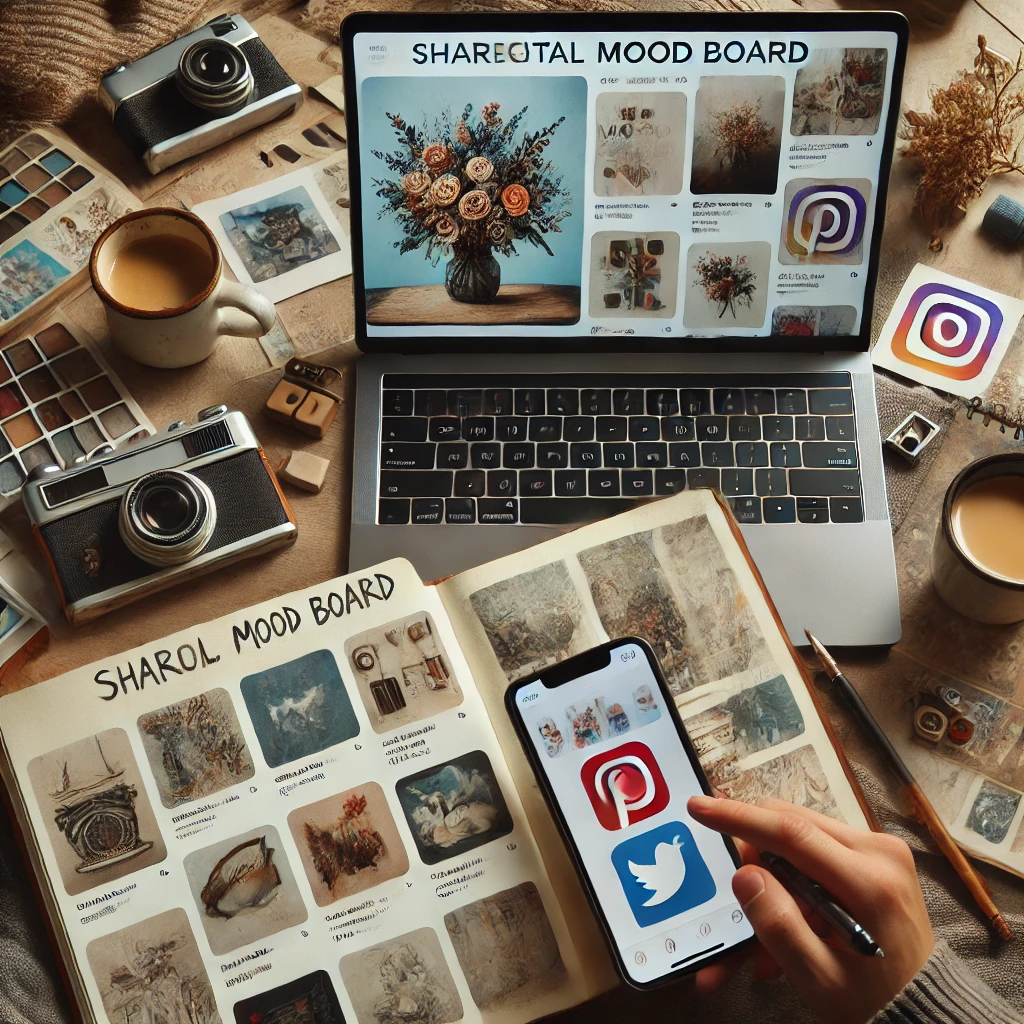
📌 Pin this guide for later and start your own mood board today!
💬 Comment below: What’s your favorite mood board aesthetic?